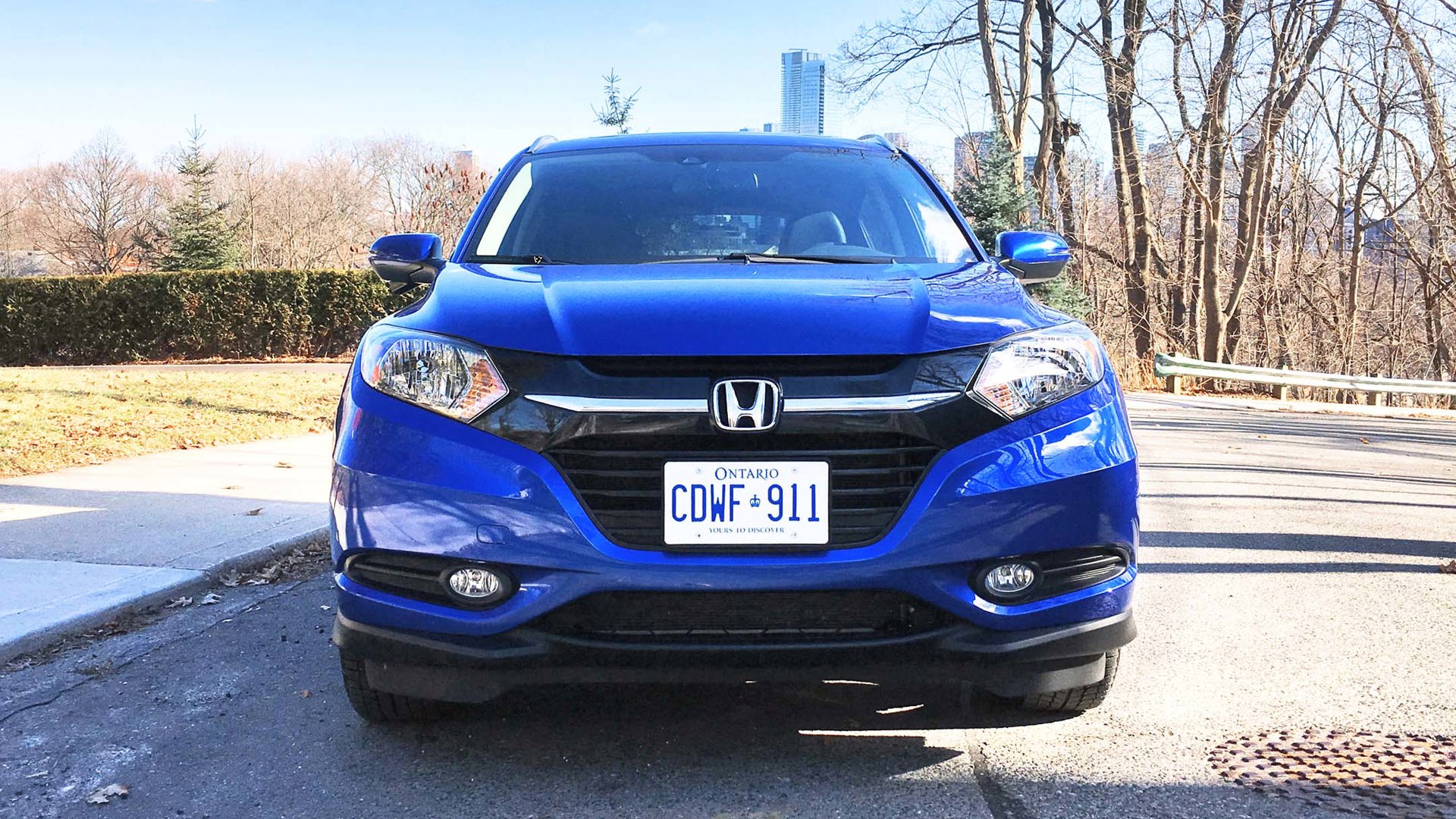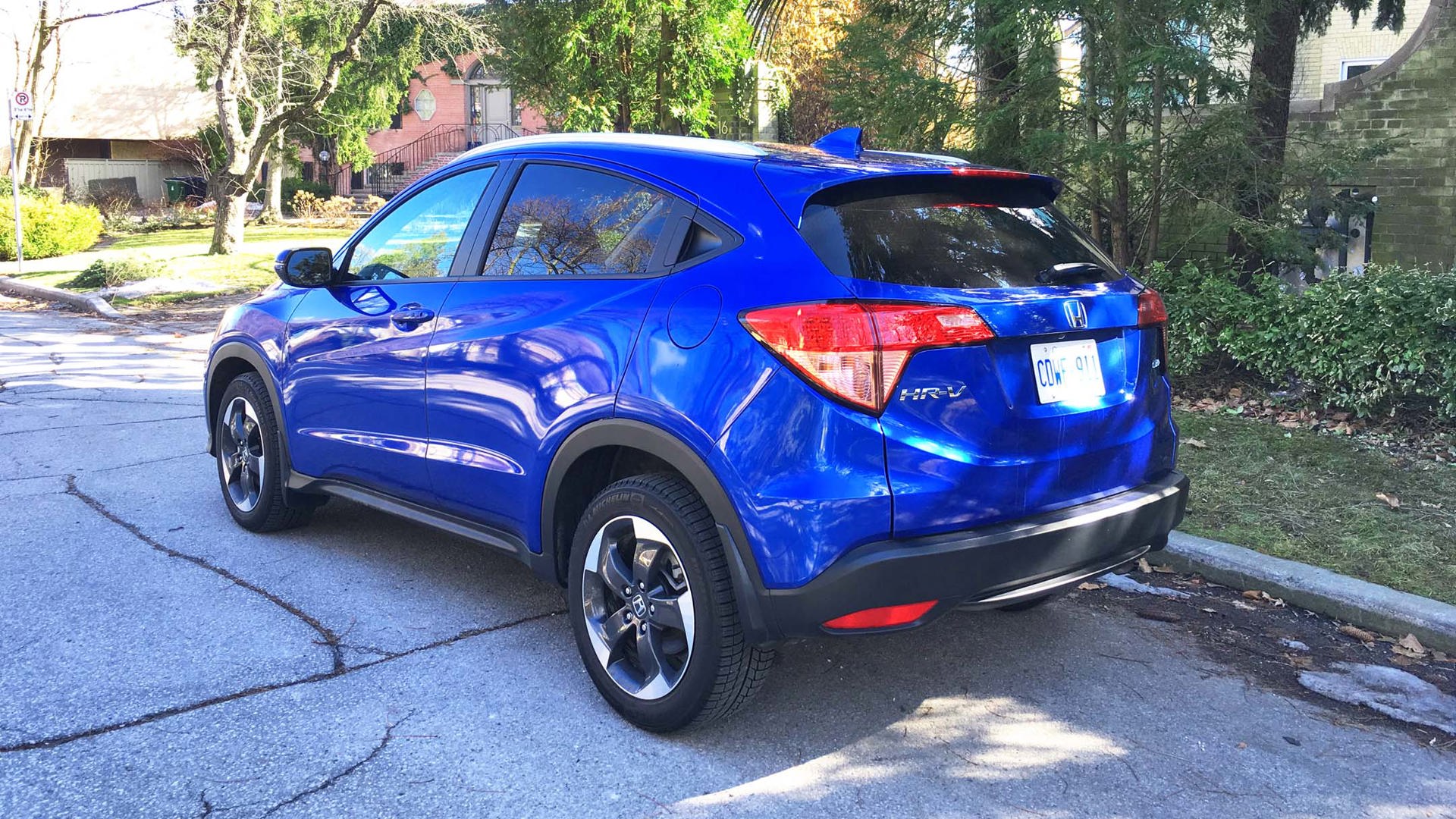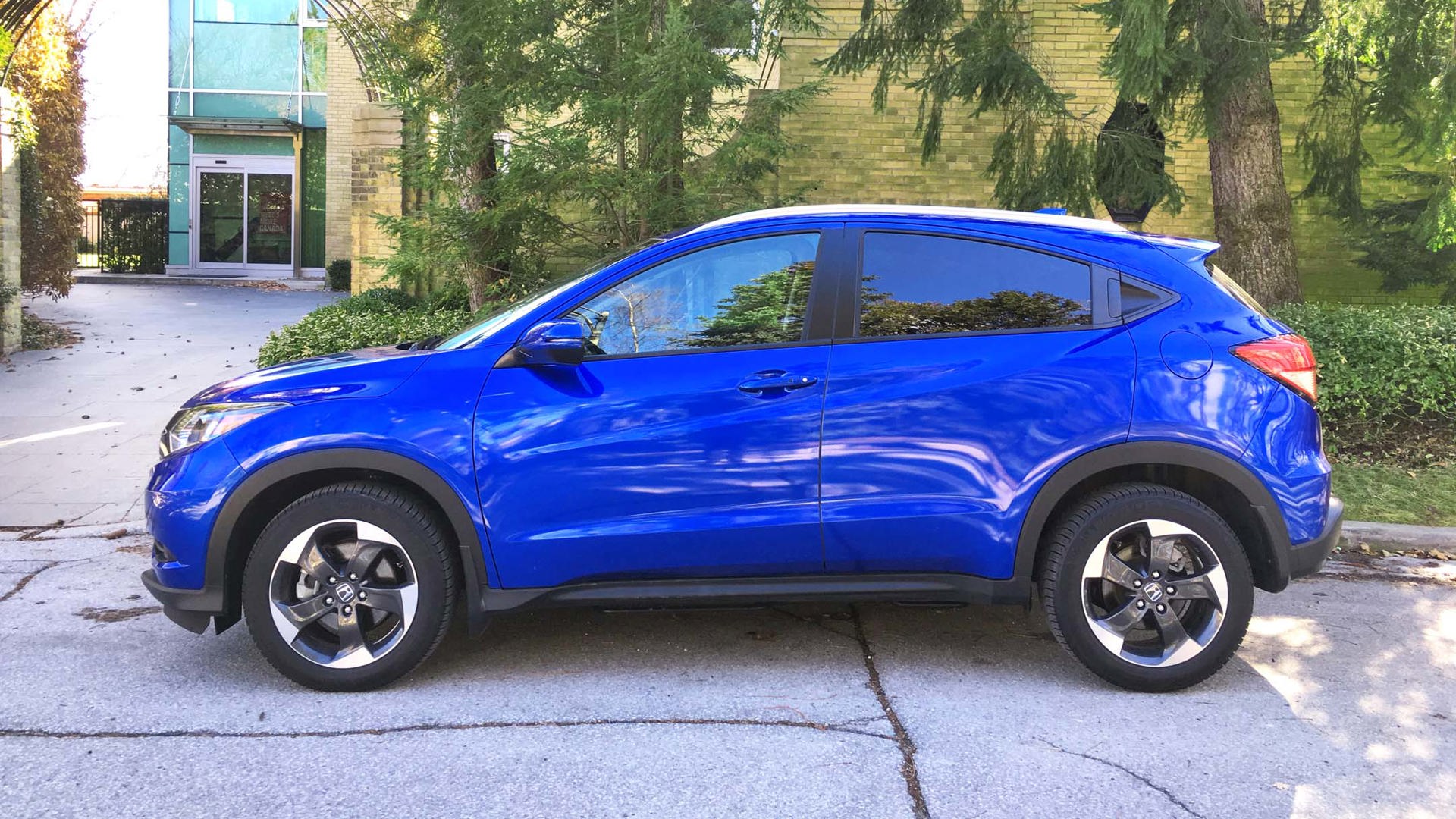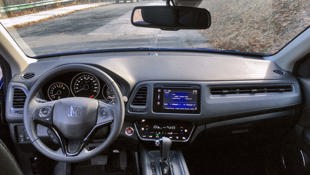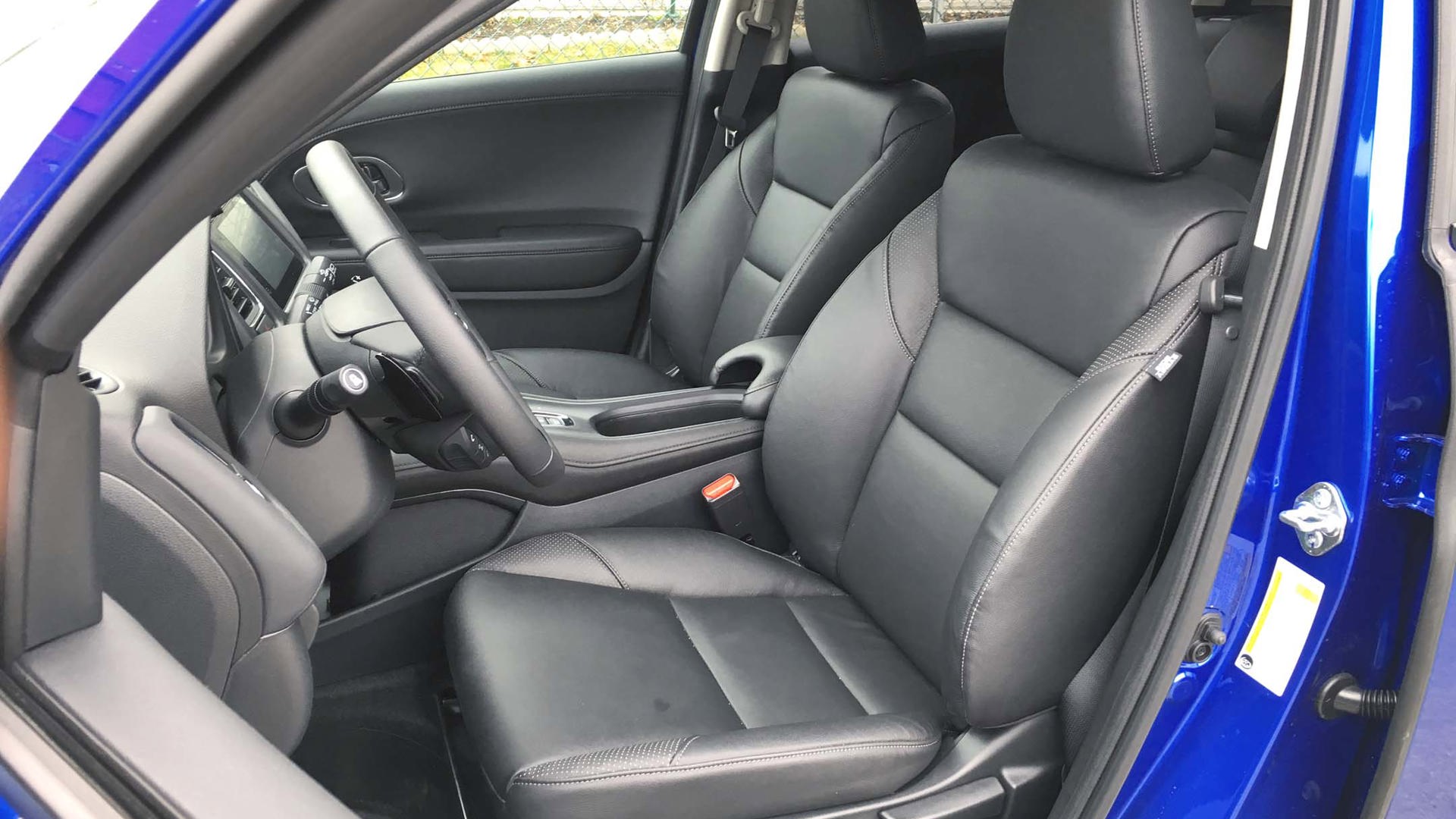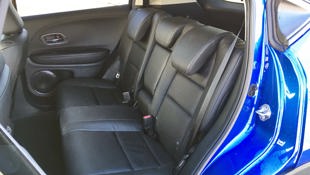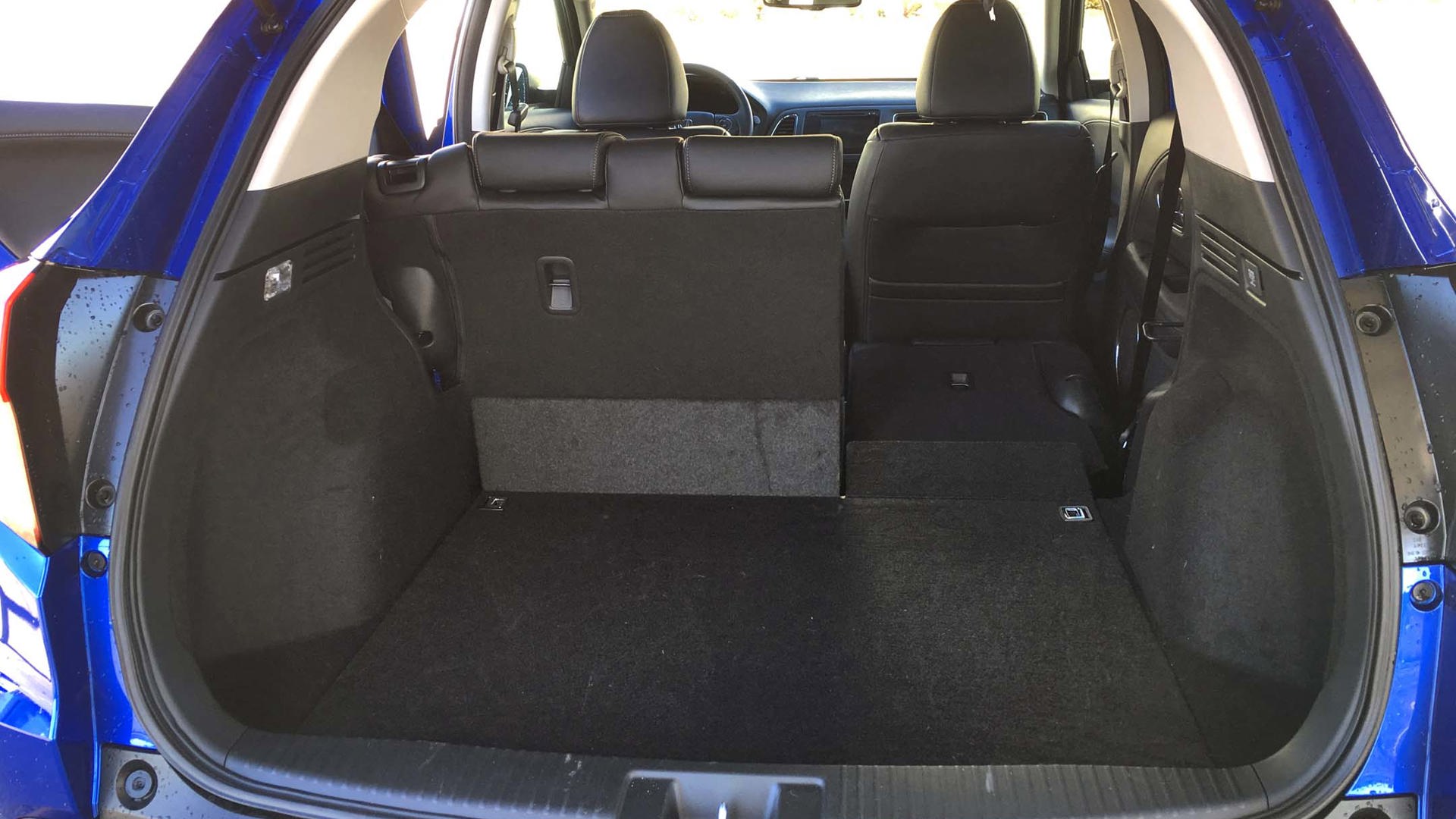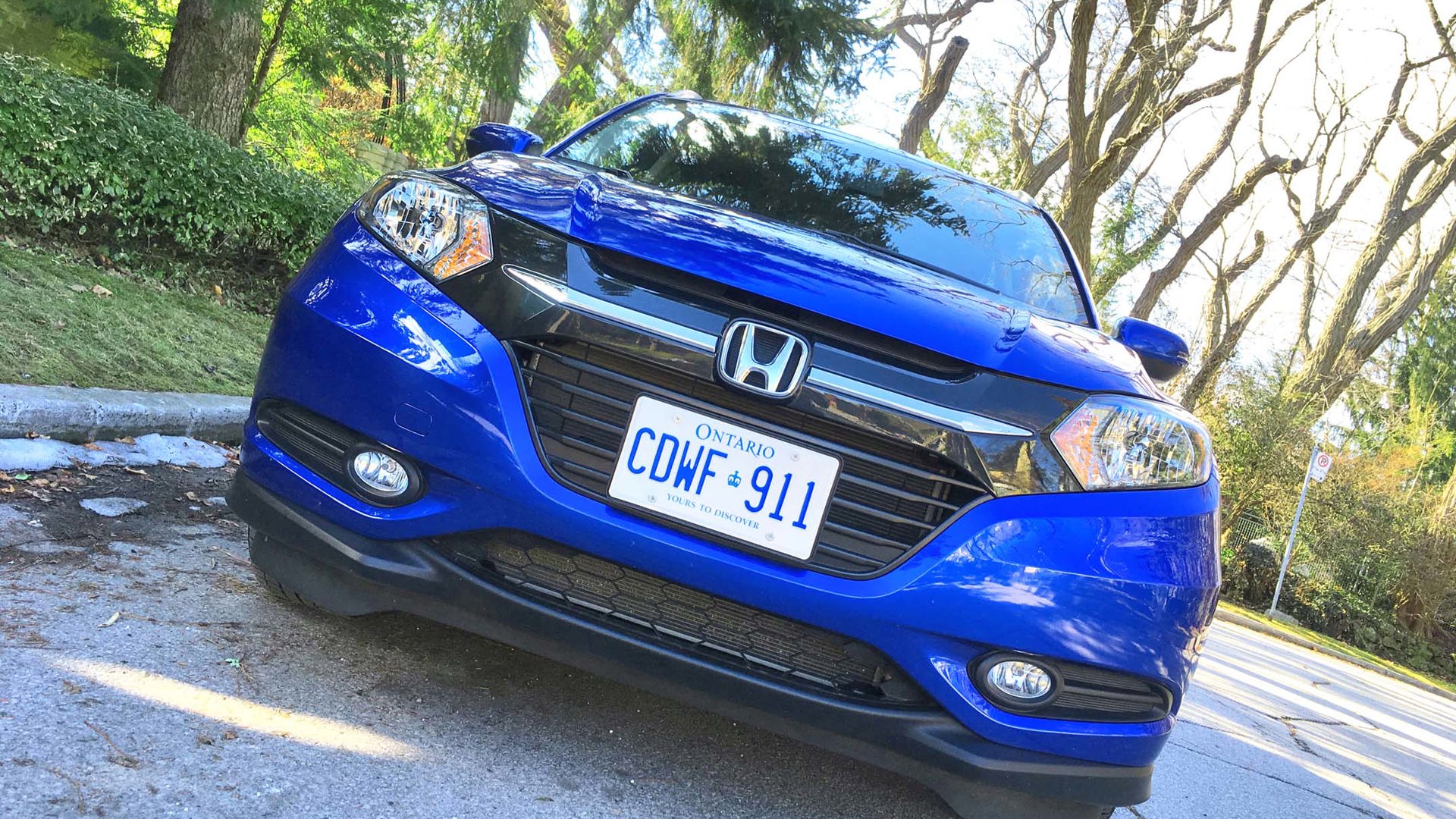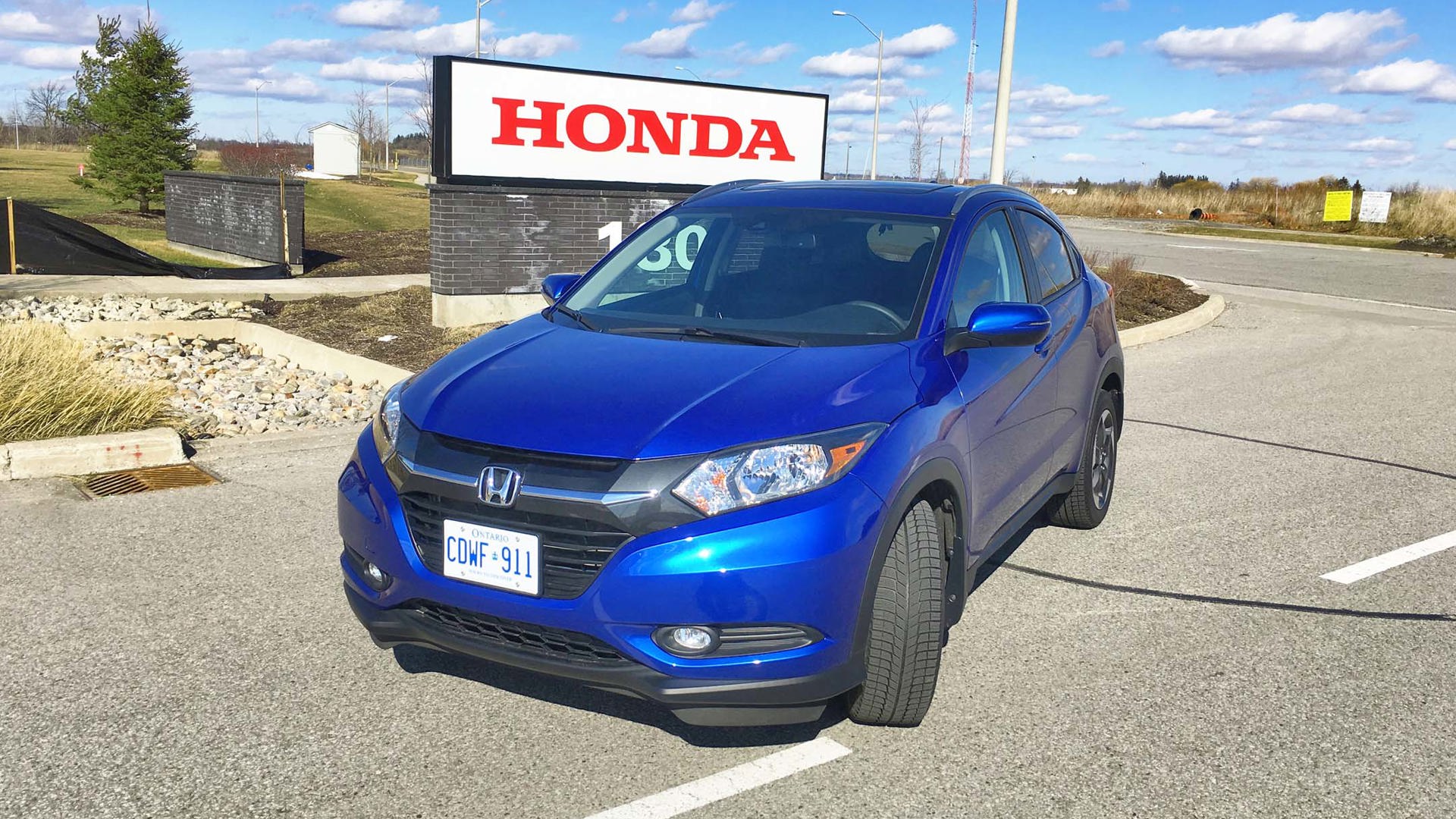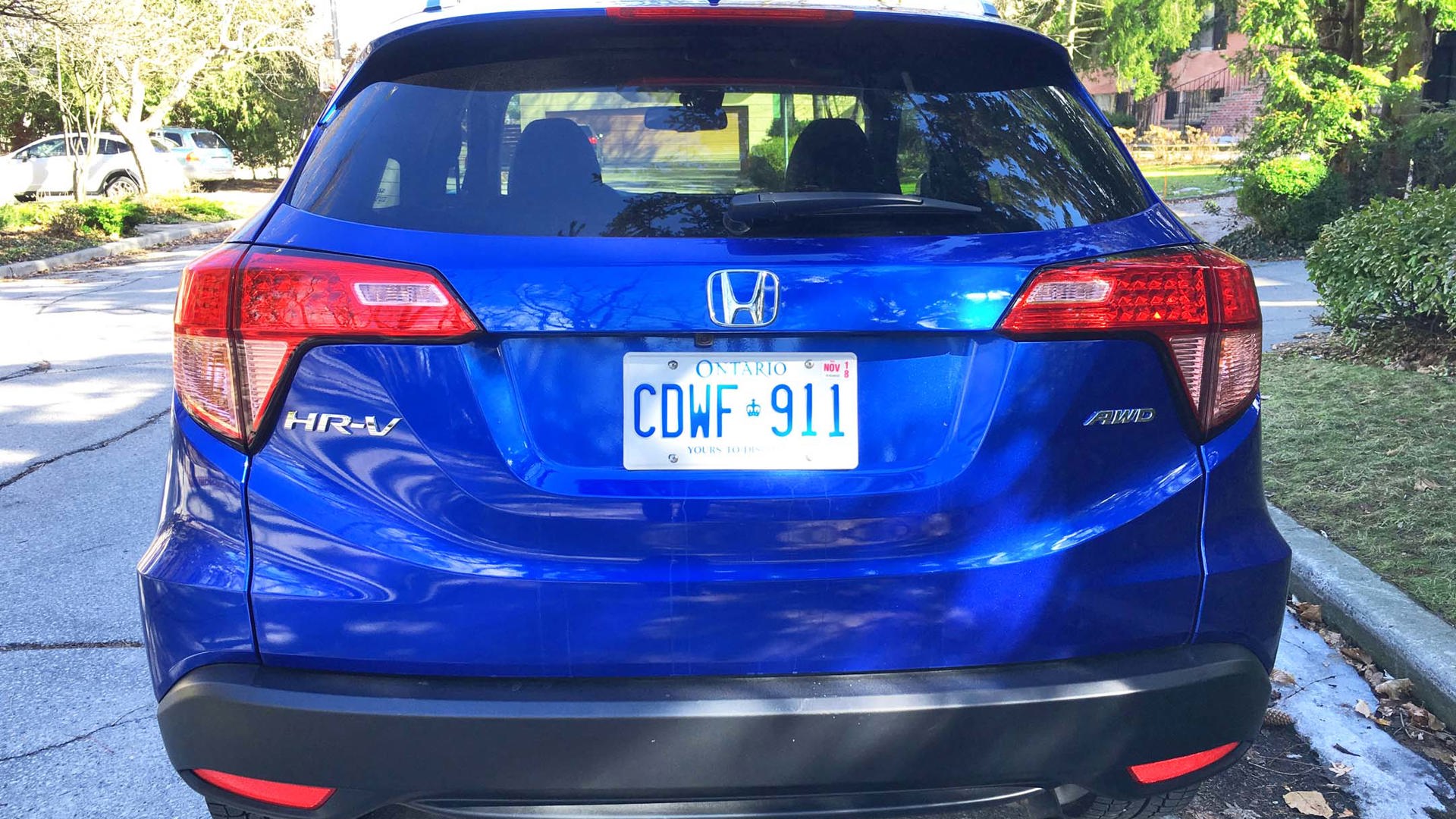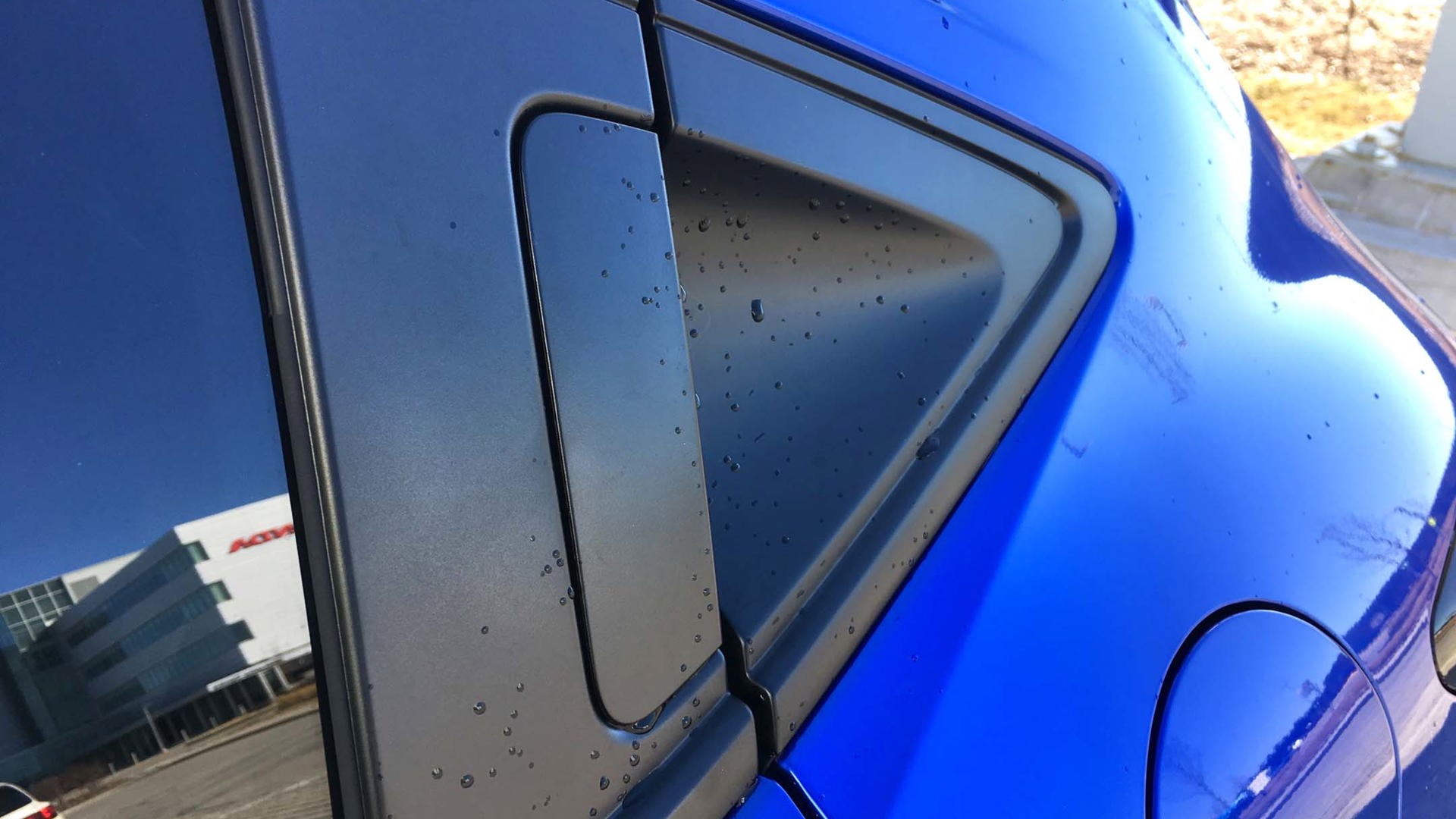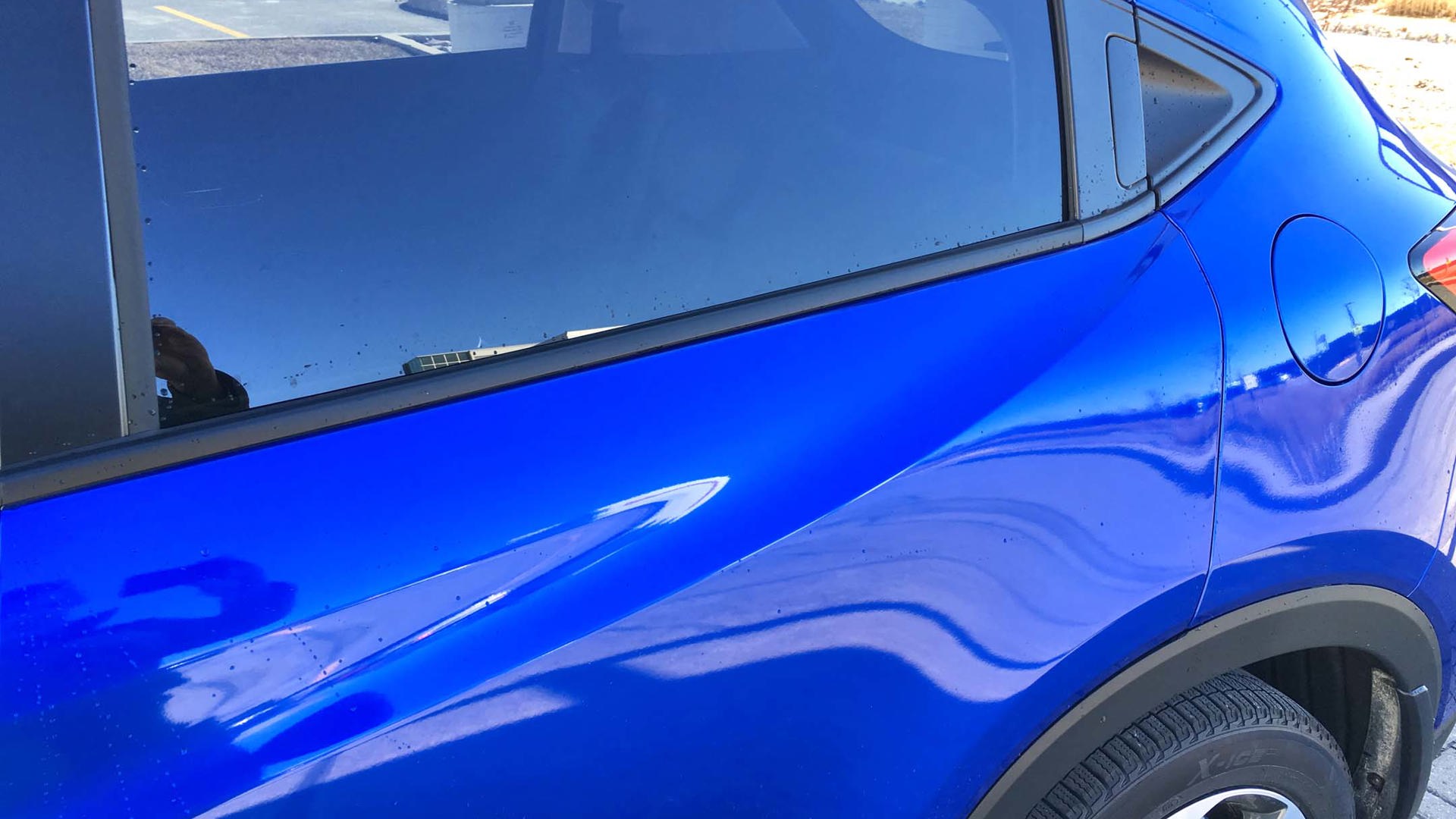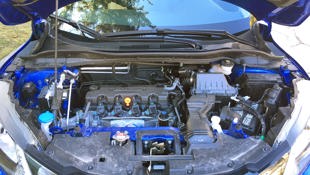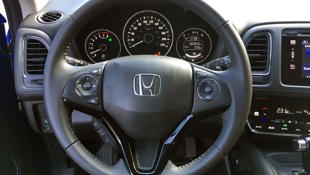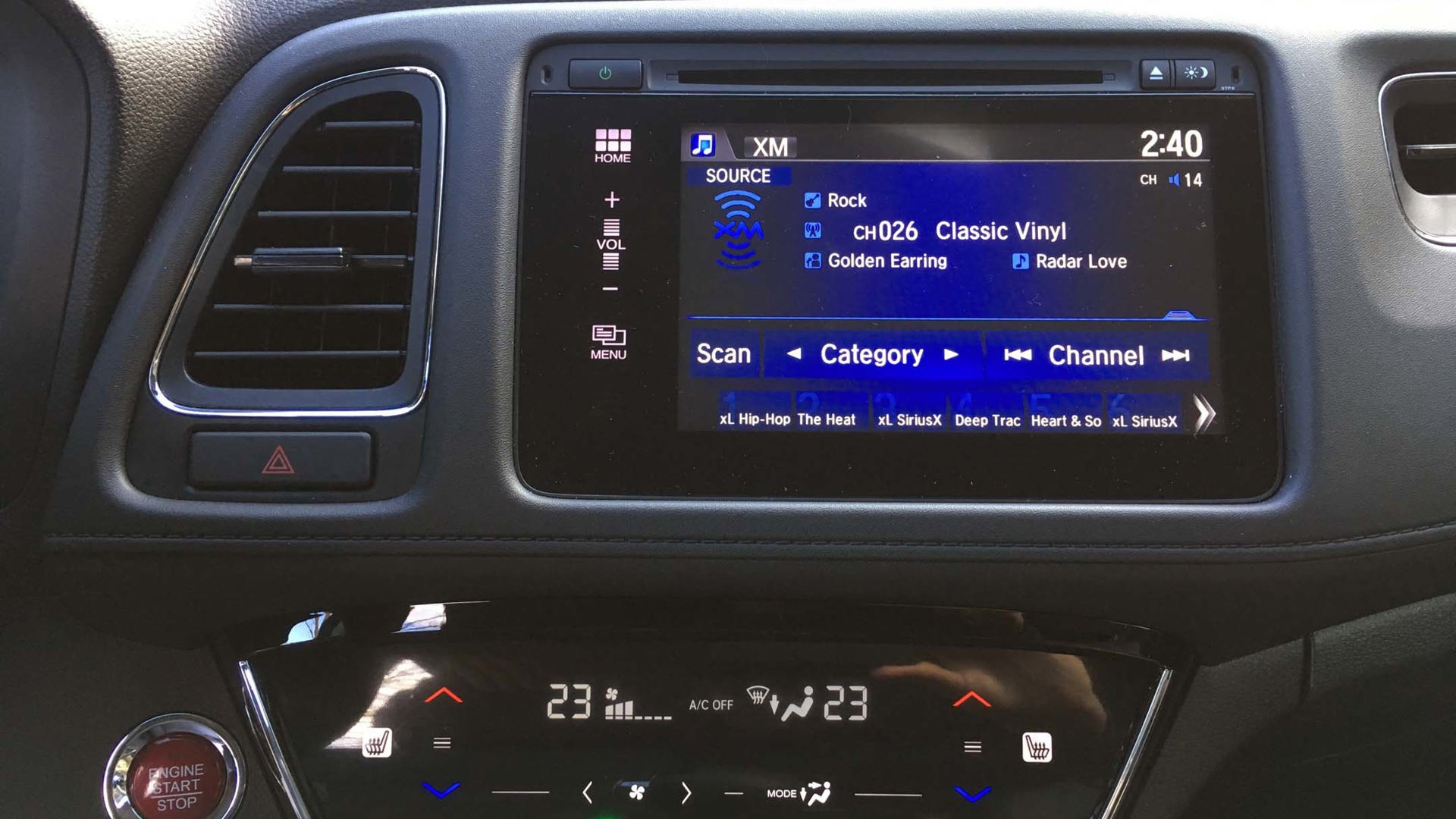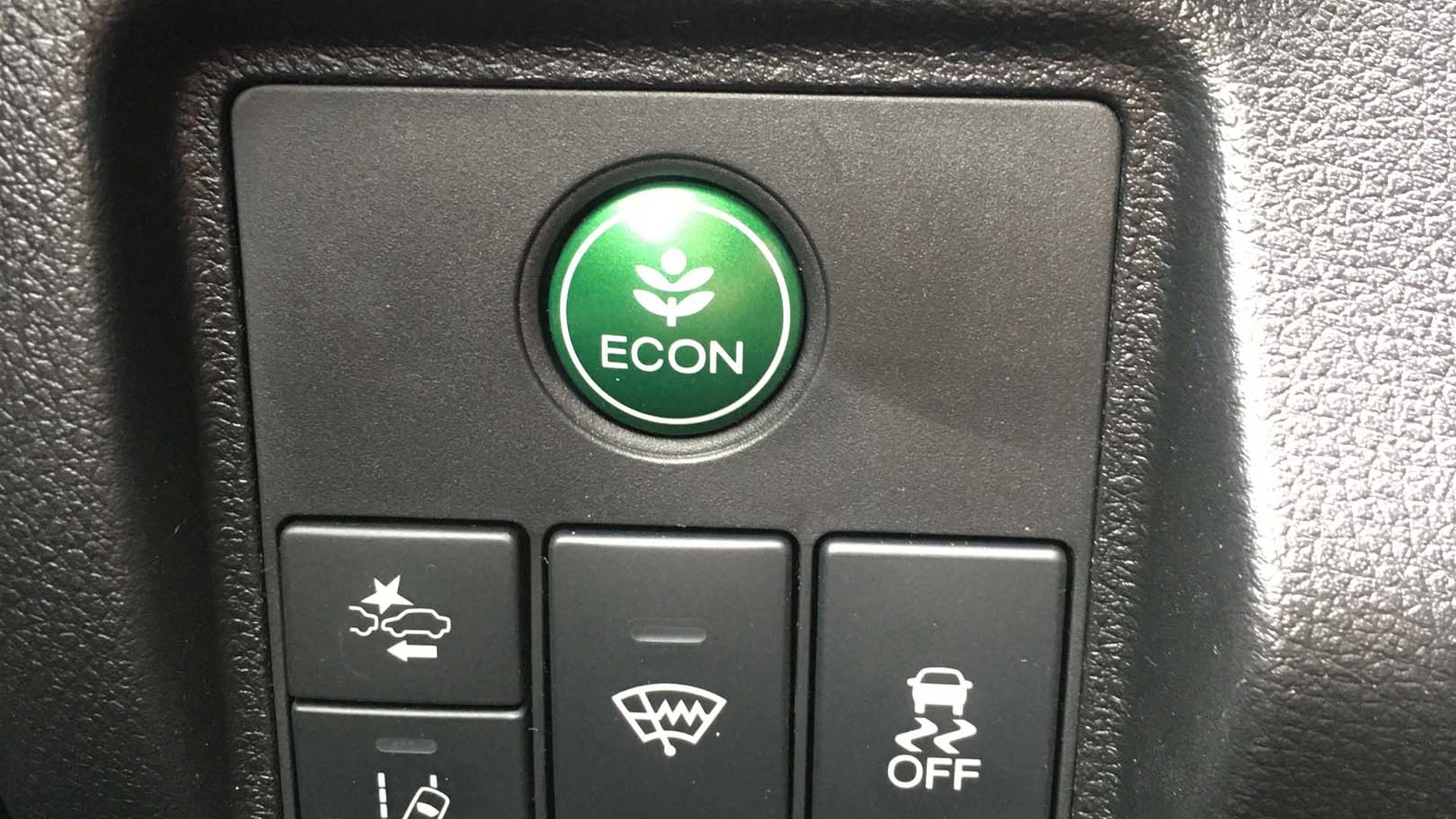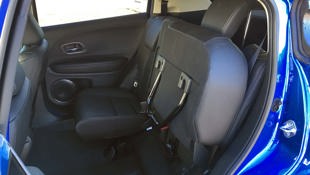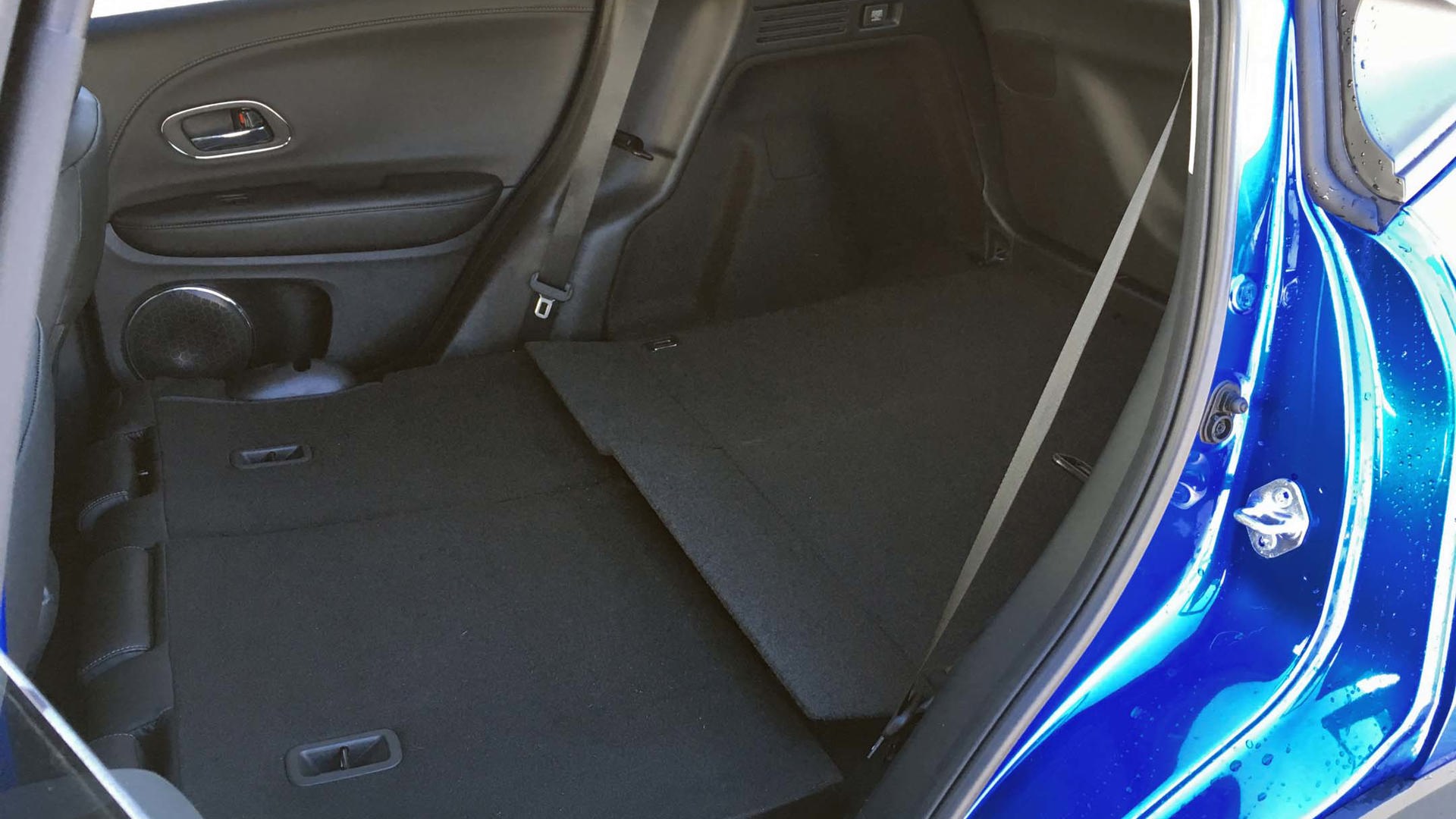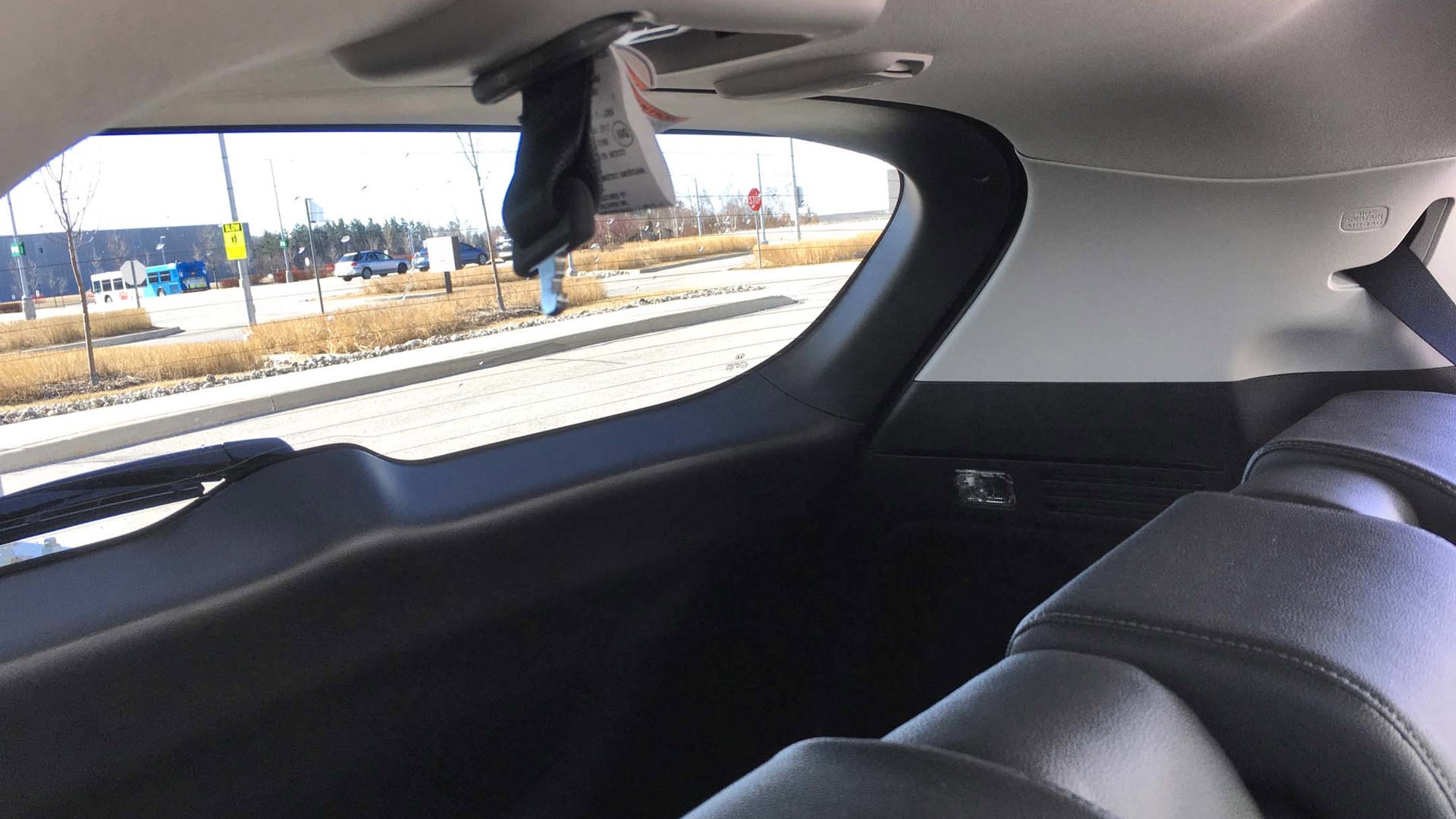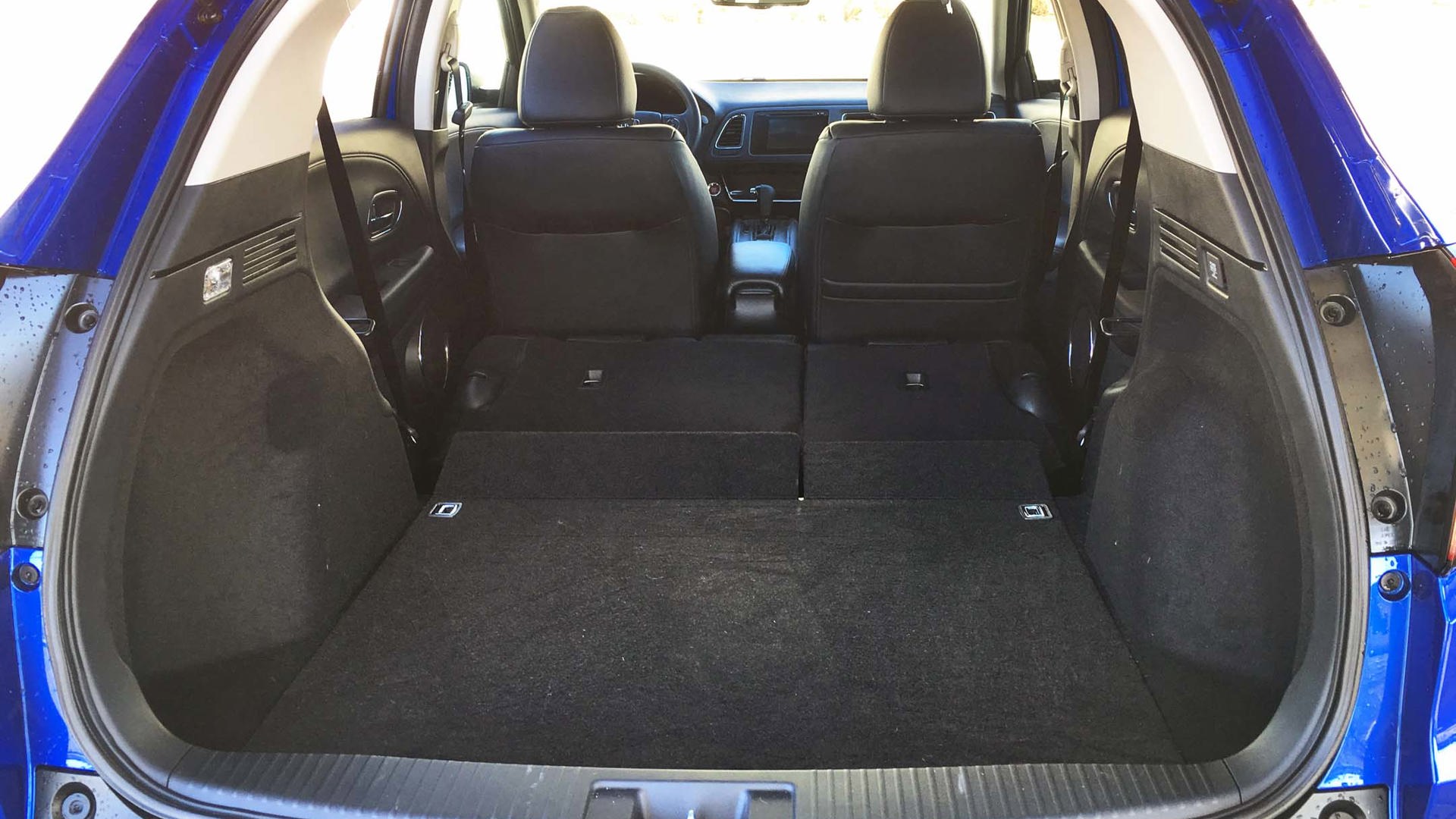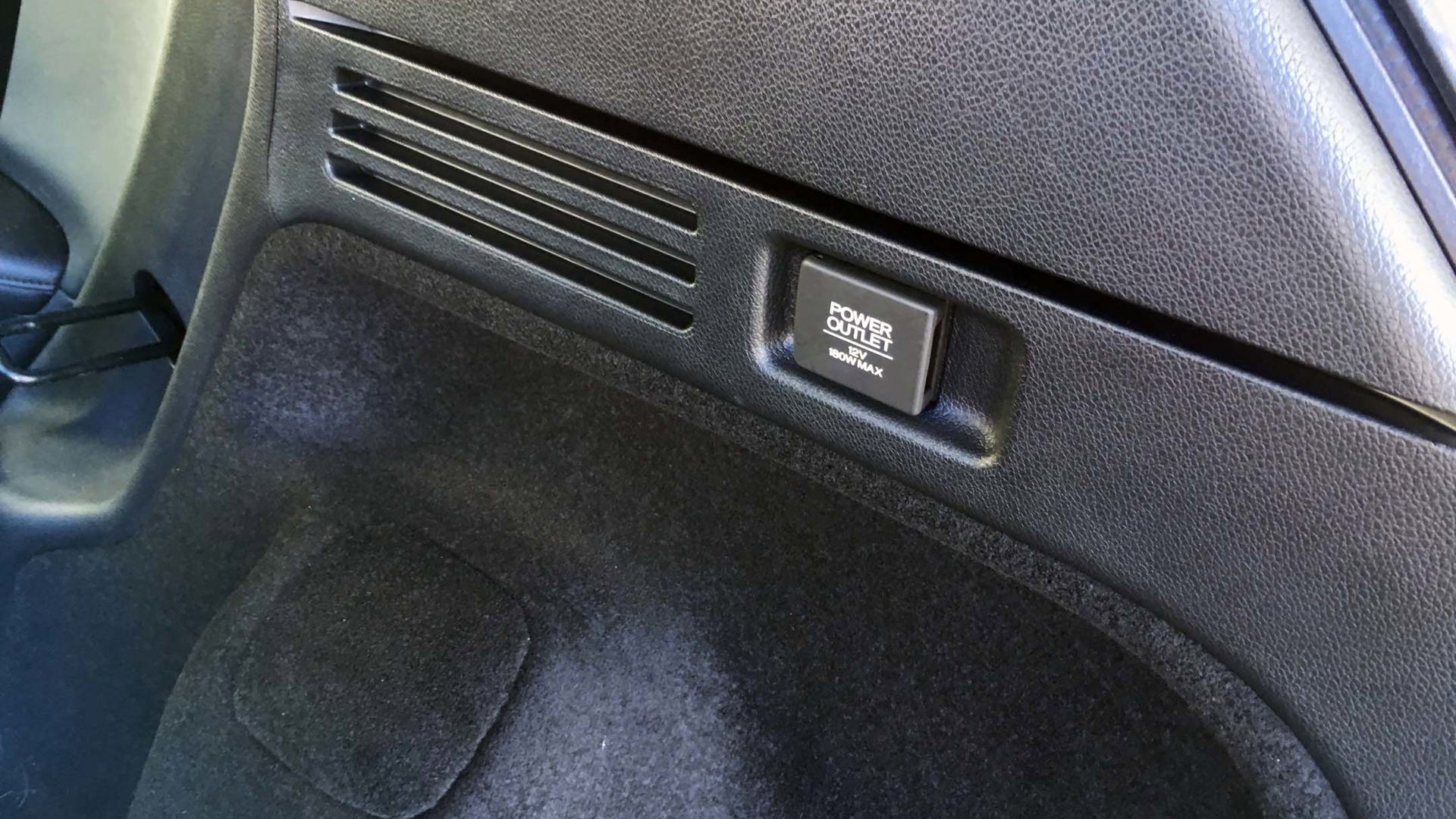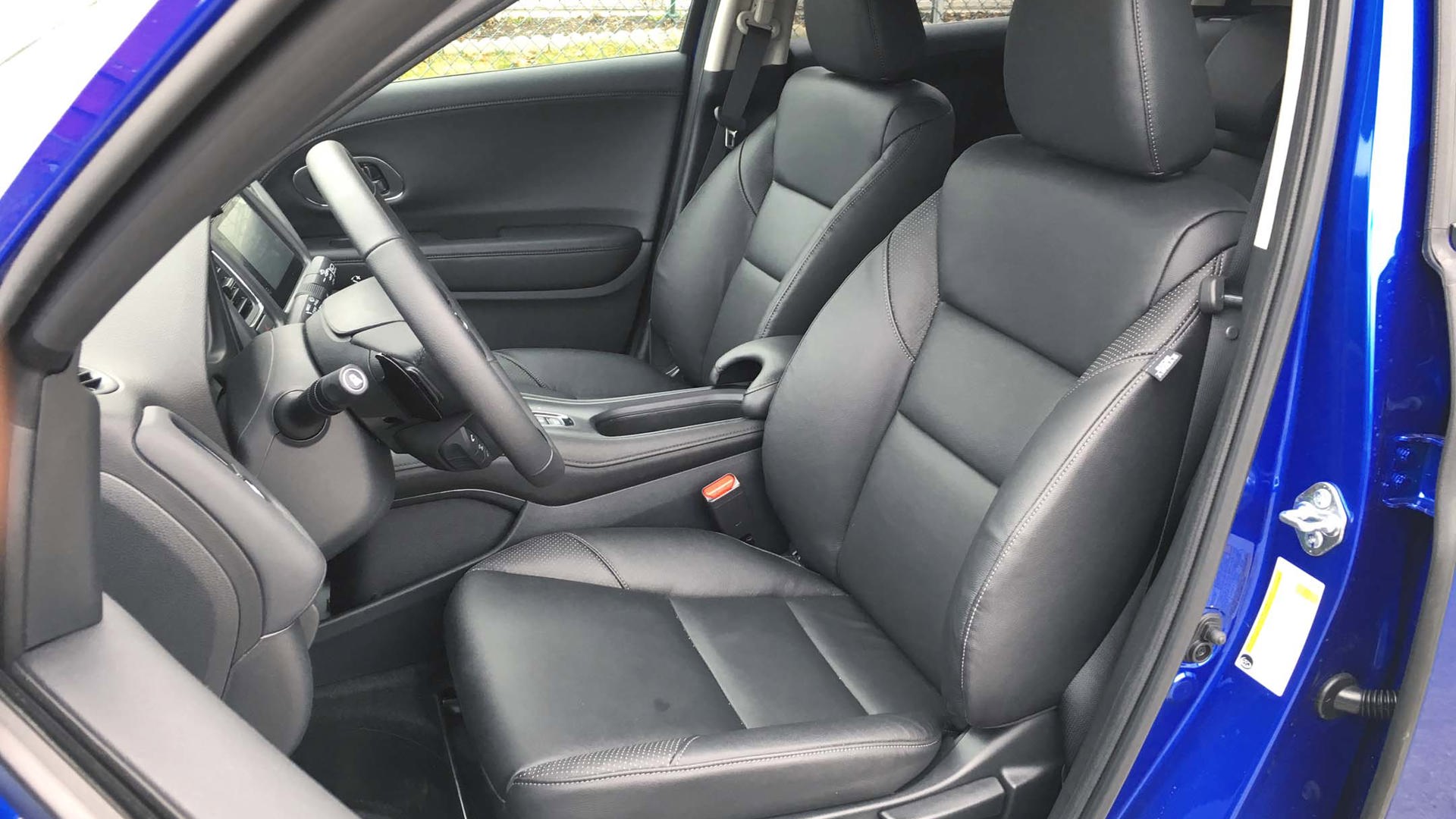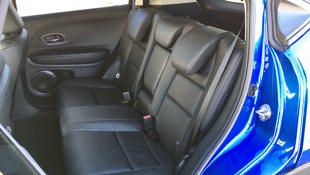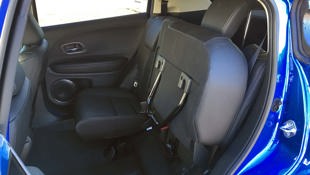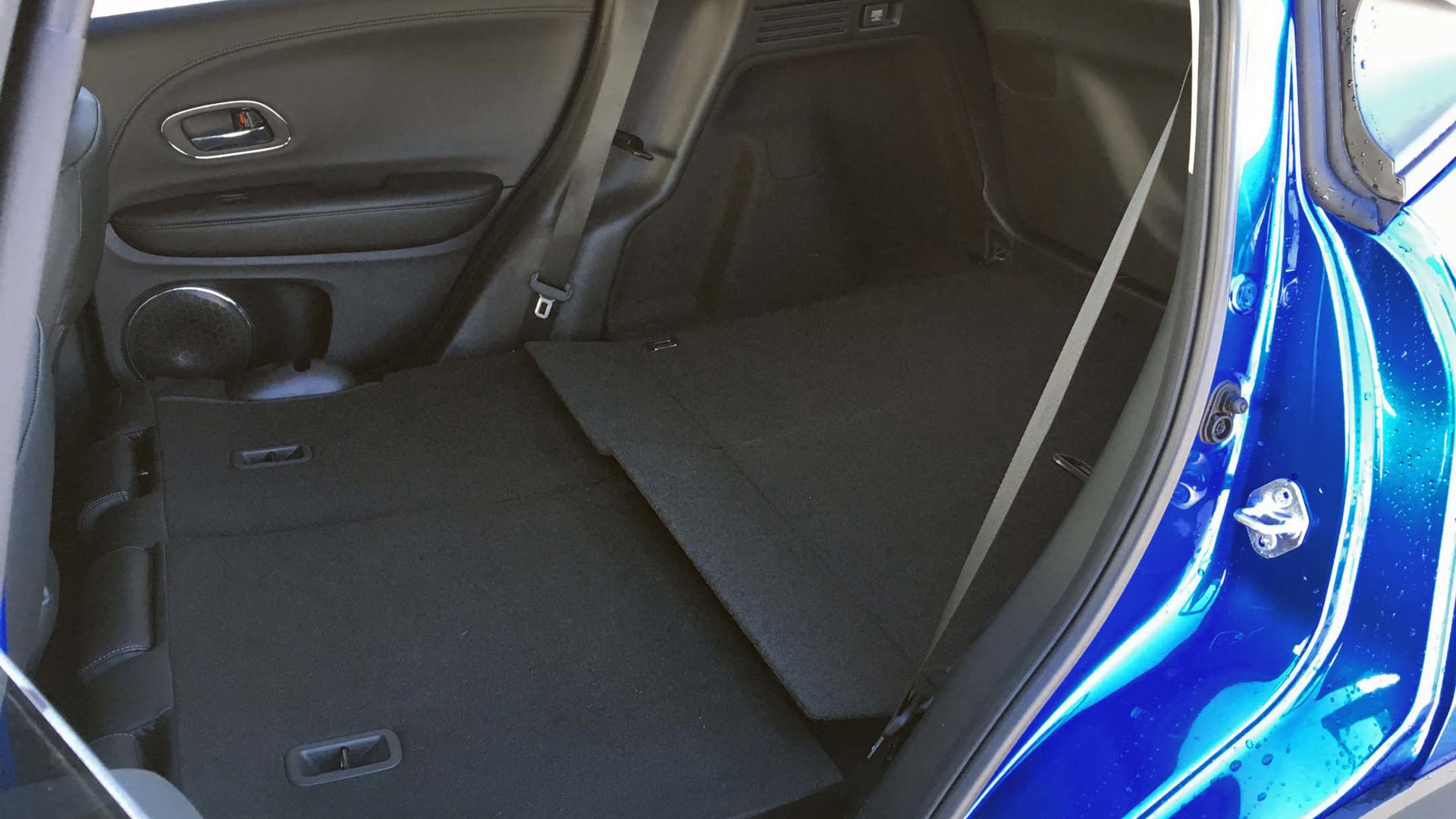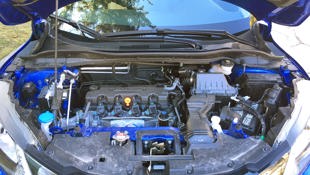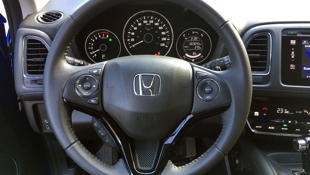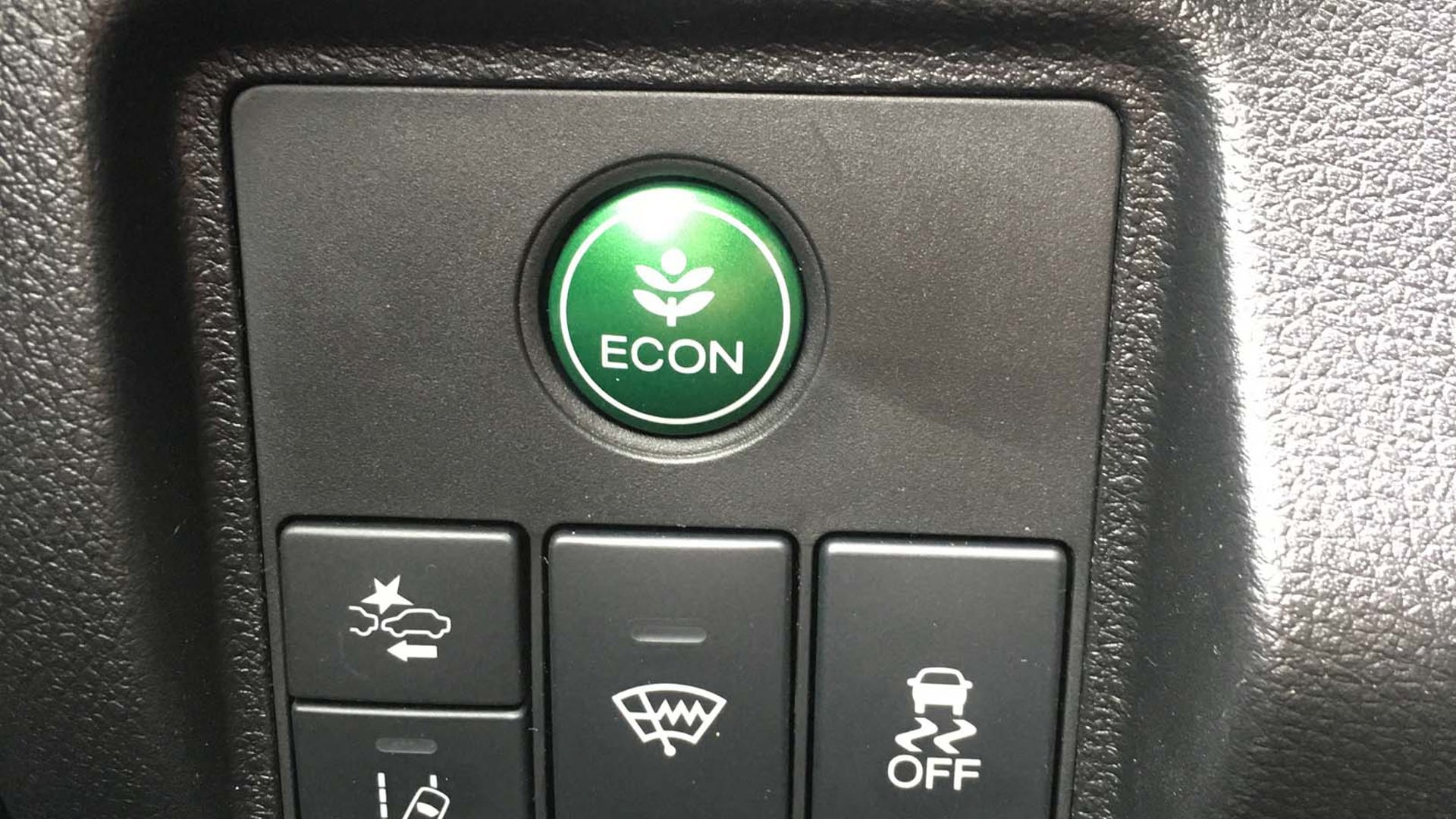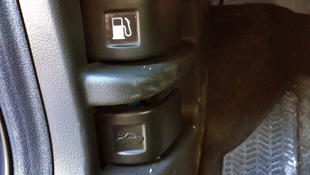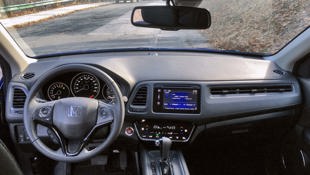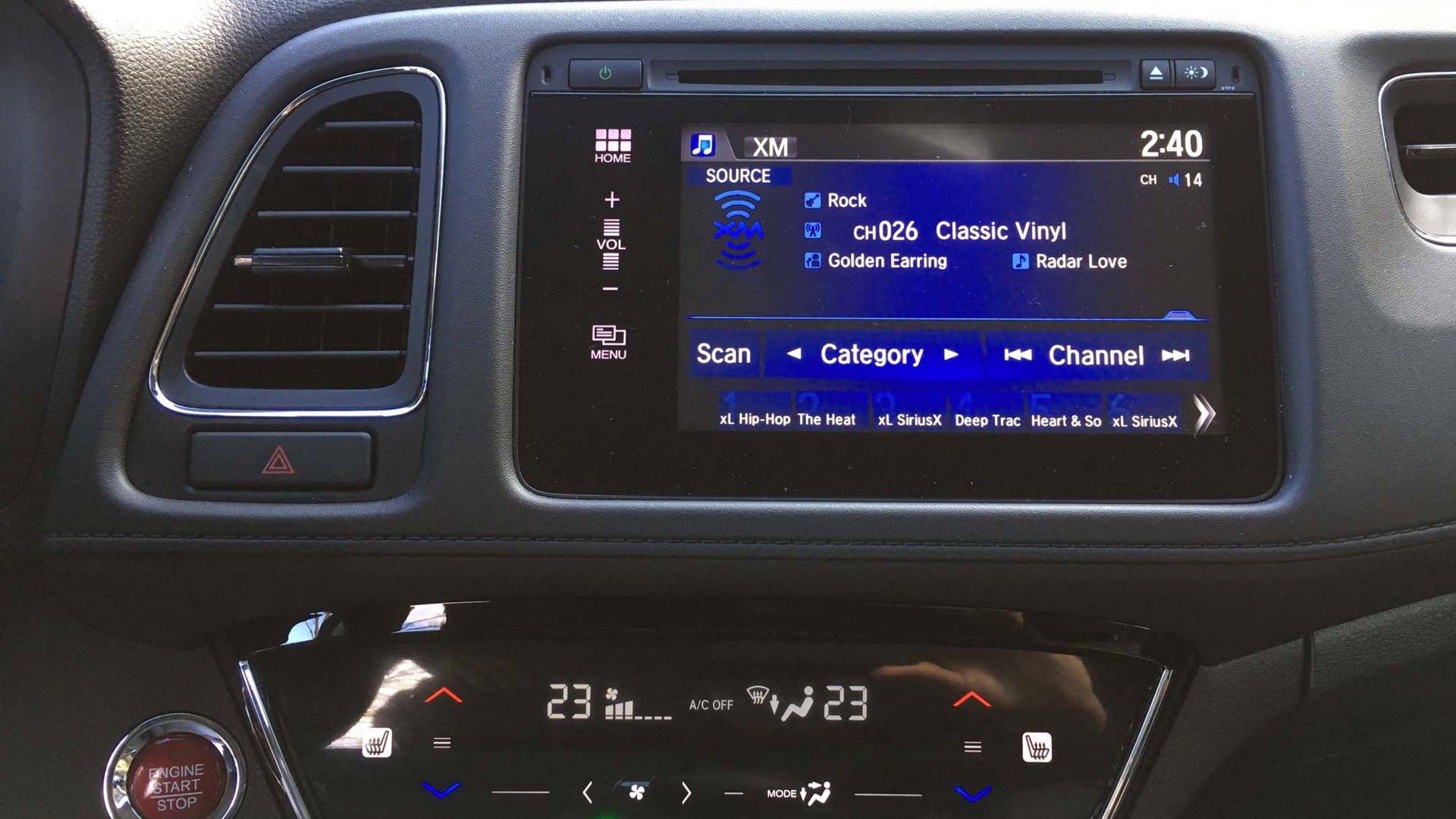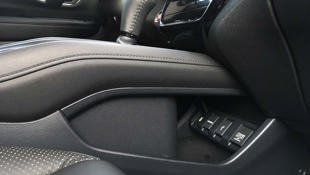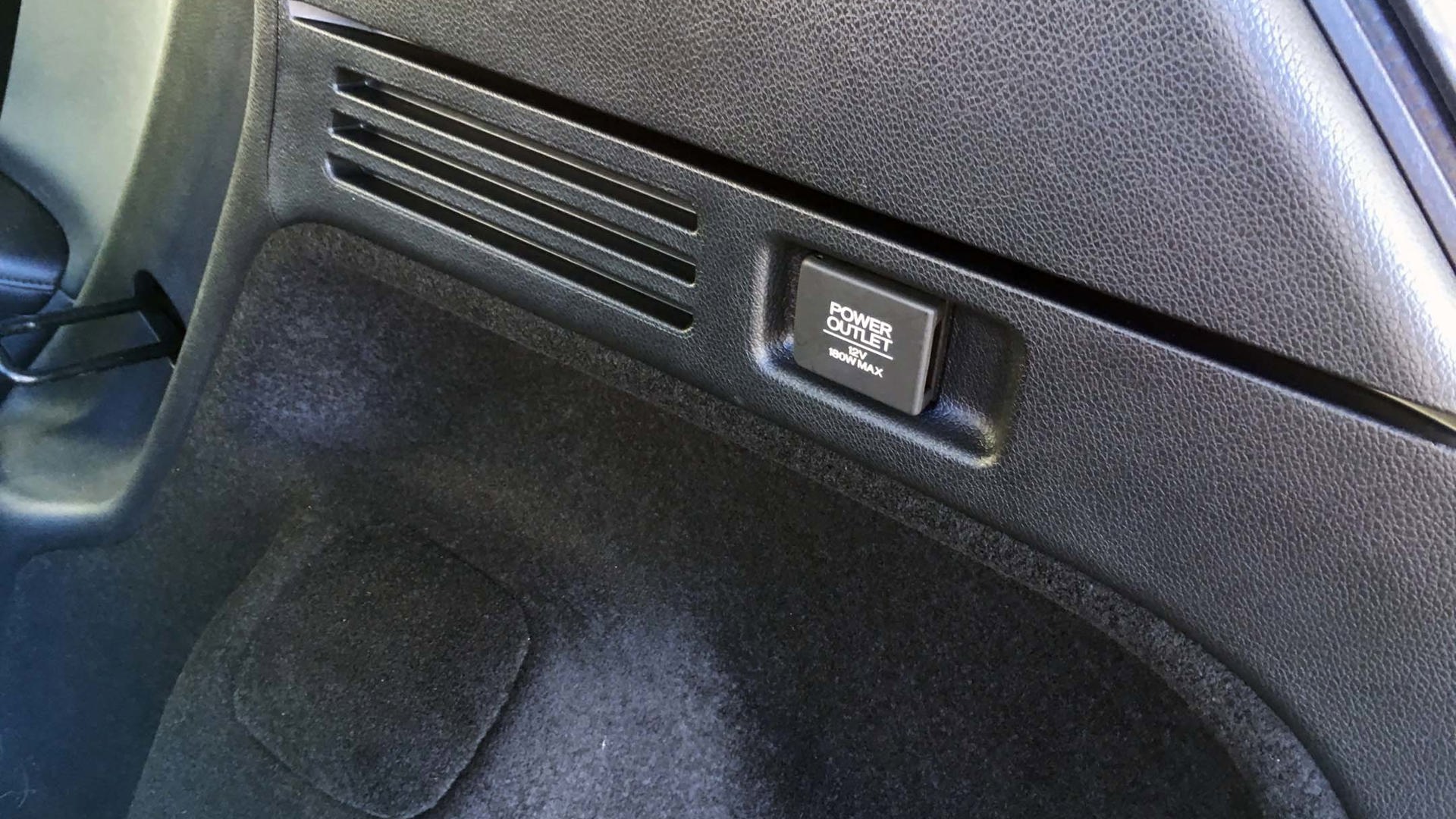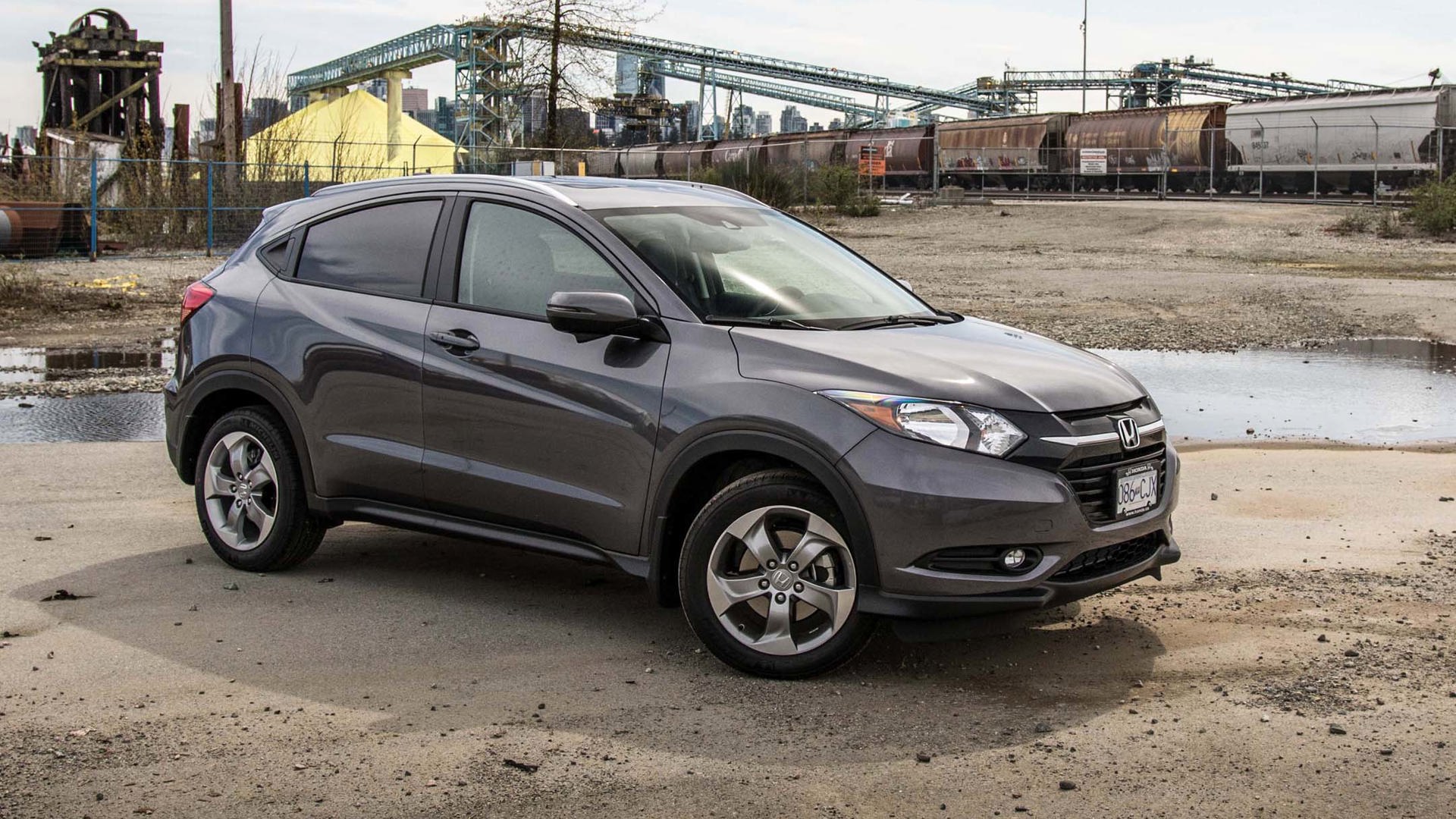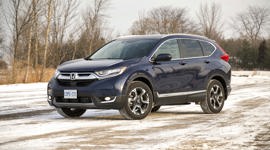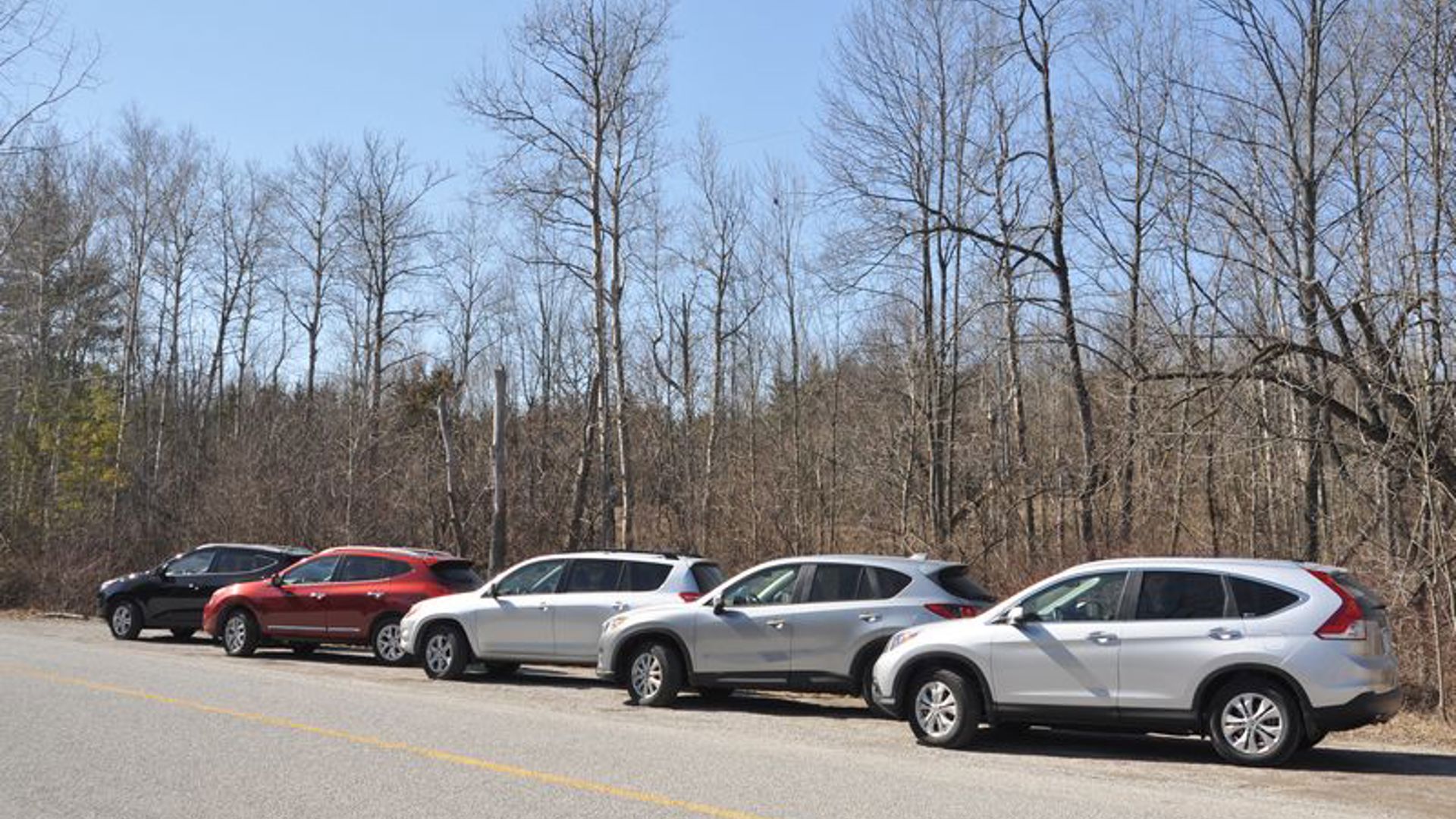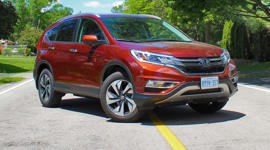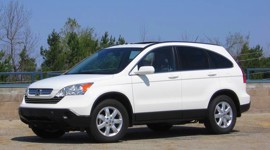 AutoTrader SCORE
AutoTrader SCORE
-
STYLING7/10
-
Safety8/10
-
PRACTICALITY9/10
-
USER-FRIENDLINESS8/10
-
FEATURES8/10
-
POWER7/10
-
COMFORT8/10
-
DRIVING FEEL8/10
-
FUEL ECONOMY8/10
-
VALUE8/10
When you don’t have much of something, smart people learn to make the most of what they do have. Now I’ve never been to Japan, but have always admired how cleverly the Japanese use space. It’s like they invent it from nothing. Consider those capsule hotels in Japanese cities or, better still, the Tokyo subway, where oshiya, roughly translated as “pushers”, are tasked with cramming riders in tighter by pushing them from on the platform.
Note how Honda’s designers apportion space. It borders on prestidigitation.
Hints of such big-picture conservationism in design pervade Honda’s lineup but truly shine in products like the Fit and HR-V, respectively the company’s smallest car and “truck” (Honda Canada’s chosen descriptor not mine).
Designed by the people who invented origami.
Get in and look around the 2018 Honda HR-V. Note how Honda’s designers apportion space. It borders on prestidigitation, a fancy way of saying “magic skills” (note the background presence of root words like “presto” and “digit”). No wonder the 60/40-split second row is called Magic Seats: they cleverly fold up, disappearing the bench like some lovely and talented assistant who keeps smiling as she is sawn in half. Though small, the result is a partial cub-van effect – maybe that’s why they call it a truck.
That invented space is very useful if you have a dog, wheelchair, bicycle, or stroller, et cetera. You can go further and fold the back seats down (like almost all cars these days).
Meanwhile, the tether anchor (for a child seat) unrolls from the ceiling above the 60 section, remaining safely out of the way till you need it. An armrest emerges butterfly-like from the unused back centre seat. So, yes, this small HR-V seats five. It could even seat five big people if you have oshiya to help pack you in.
These little unfolding grace notes are like automotive origami.
Step outside now. Handles to the back doors are built into the ends of the windows for a sleek appearance. Despite the HR-V’s height, the impression is more hatchback than truck or even SUV. Its dimensions are worthy of note for a small family without much parking space but plenty of stuff. (If such numbers mean anything, you have 657 litres of storage with the seats up and an agoraphobic 1,583 L with them folded away!)
And in case you need more space to cart still more stuff, this top-trim EX-L NAVI includes roof rails. But does HR-V have the power to move all that gear?
Engine and powertrain… after just a bit more design.
Depending on whose terrible typing you trust online, HR-V probably stands for Hi-Rider Vehicle. That definition works well. Consider its boxy dimensions: At 1,605 mm tall but just 4,294 mm long and 1,772 mm wide – and that with its mirrors sticking completely out like Keith Richards’ ears – the HR-V tucks neatly into congealing city traffic but offers a bit of height to give the understandably paranoid city driver the lay of the upcoming road.
Regarding that height, it’s all relative. The HR-V is no mommy-blogging power SUV or suburban contractor’s pick-up truck, but it outstretches most cars. Take Kyle Lowry off the basketball court and you’ll notice that he’s actually very tall.
Back to the name: I’ve always preferred to call this multi-tasking CUV the Harvey, after Mary Chase’s famous 1940s play of the same name. Its constantly tippling aristocratic central character Elwood spends his life drinking and chatting with his best friend, an invisible six-foot rabbit named Harvey. Given the HR-V’s surprising height, its ability to slip entire sections of itself into invisibility, plus driving agility like that of a taller VW Rabbit, Harvey works as a name.
Anyway, there you are in traffic. How much power do you have?
Don’t take Harvey to the track, especially with all the stuff you’ve been piling in it these past five paragraphs, from wheelchairs to invisible six-foot rabbits. The 1.8L, 16-valve four-cylinder engine eventually achieves 141 hp at 6,500 rpm and 127 lb-ft of torque at 4,300 rpm. As mother used to say, “You’ll get there when you get there.” If you don’t notice that the Econ button is on – it’s inconveniently placed near your left knee – you may be getting there just that much later.
The engine’s paired with an excitable continuously variable transmission (CVT) – but the whole package works well enough. Even with the added weight of all-wheel drive (AWD), something Canadians will love, the Harvey’s fuel economy numbers are a decent 8.9/7.5/8.2 L/100 km city/highway/combined.
Of course, if you do fancy yourself a road warrior, others in your Harvey will be glad of the safety features, which are comprehensive at this top trim.
Safety
The EX-L NAVI features lane-departure warning and a forward collision warning system, whose radar is like that of a nervous squirrel when you’re in tight highway traffic – not a bad thing but surprising at first. The real-time AWD intuits when to kick in. The multi-angle rearview camera is something any city dweller without X-ray vision in the back of their head will appreciate.
Standard safety features range from stability assist with traction control to hill start assist to HondaLink, which will call emergency services from your phone when you’re in an accident. (Don’t worry: emergency calls are free, so you’re not paying for their calls.) This seems like an appropriate spot to segue.
Gadgetry and comforts
This trim comes with satellite radio and a homely if thoroughly functional audio system. That system is named Next Generation and is blessedly simple even for me to suss, but the choice of colours and type reversed out of black feel dated. Visually, it’s an interface that could’ve been deployed in KITT. (Remember this larger story is a salute to the designers but as mother used to say, nobody’s perfect.) The system is also satellite-linked for navigation and offers voice activation.
You’ll also get used to the convenience of the proximity key entry system fast, though be warned that it, like the radar system, is sensitive. It noticed me walking by to the shed and unlocked itself like a dog fetching its own leash in hopes of walkies. Speaking of noticing your surroundings, the speed-sensitive volume control is de rigueur given the vocalizing CVT.
Dual-zone automatic climate control with air filtration doesn’t quite ensure peace between the sexes but at least can bring two parties who disagree utterly on ambient temperature to the table.
At this trim, the seats are leather-trimmed and heated, as is the steering wheel. The seats don’t come with paddle shifters, though the steering wheel does. I used them once, during a sudden snowfall while I was on a hill, for that extra bit of control.
Oh, and the drive! It’s pretty darn good.
The use of space and engineering is still the story here. The dynamics of the HR-V are well balanced. This “truck” is nicely proportioned for sliding in and out of traffic deftly without feeling wobbly in sharp turns. The steering is sharp, not an all artificial-feeling, and the brakes are firm.
You’ve already been warned not to race the HR-V but if you’re looking for a functional utility vehicle without too much fun, this would go near the top of the list.
| Engine Displacement | 1.8L |
|---|---|
| Engine Cylinders | I4 |
| Peak Horsepower | 141 hp @ 6,500 rpm |
| Peak Torque | 127 lb-ft @ 4,300 rpm |
| Fuel Economy | 8.9/7.5/8.2 L/100 km city/hwy/cmb |
| Cargo Space | 657 / 1,583 L seats down |
| Model Tested | 2018 Honda HR-V EX-L NAVI |
| Base Price | $30,650 |
| A/C Tax | $100 |
| Destination Fee | $1,795 |
| Price as Tested | $32,545 |
|
Optional Equipment
None
|
|
